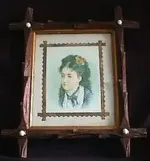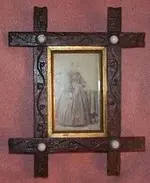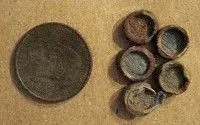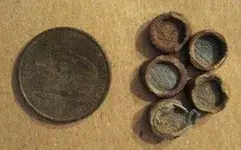Note: The following is inconclusive at present and will require more research. But in my opinion it is worth considering. It is intended solely for the purpose of trying to establish facts only, and not to create controversy or argument.
~ * ~
I have been doing some research on nails in general and roofing nails in particular. And although there is a great deal to be found regarding the history of nails in particular, there is very little of it that focuses on roofing nails. However, I did find enough regarding roofing nails, especially ones with lead caps, to cause me to believe they were not used until after the Civil War. I invite you to do your own research if you wish to find out more specifics, but the following is what I have found so far.
Note: I admit it is premature of me to assume that square-headed nails most likely did not fit well with round caps/gaskets made out of lead. But until furthure research proves otherwise, I'm going with the evidence which indicates that round-headed nails were not invented and used until after the Civil War. Of course, there is always the possibility that a square nail was used in a round gasket, but I seriously doubt it. The most compelling evidence that I found regarding the patenting and use of lead-capped roofing nails can be read below.
In conclusion: (Personal opinion only). If the mystery caps in question are in fact nail related, I honestly believe at this juncture that they ended up where they were found "after the Civil War." And if the caps are not nail related, then I really don't know what they are, and will require more detaild research to determine that.
Please check out the following and see what you think. The links are all nail history related, some with pictures and some without.
Thanks for allowing me this opportunity to present a few more clues, no matter how inconclusive they may seem.
Gracias'
SBB
Joseph Venables applied for a patent on 13 September 1883 for "Tin Wired Nails with solid lead-heads and washers." His invention first tinned the nail and then cast the lead-head on to it, making it solid and not liable to separate from the nail when being driven. It was claimed that the "wire nail makes a smaller hole in the iron than the ordinary galvanized nail. The solid head prevents leakage. The combination saves time in dispensing the necessity of threading washers required in the use of the ordinary galvanized nail and can be supplied at less cost." In 1899 Joseph Venables again applied for a patent for "An improvement in the manufacture of lead-headed nails, and apparatus for employment in connection therewith." But this application lapsed in 1900.
In the 1850’s several manufactures were established in New York which made wire nails. These machines were most likely imported from France. The earliest wire nails were not made for construction but for the manufacture of pocket book frames and cigar boxes. It was not until after the American War Between the States that wire nails began to gain acceptance in construction. Even through the 1890’s many builders preferred using cut nails because of their holding power. It was well into the twentieth century before wire nails became the dominate type and only then because they were so much cheaper.
http://www.uvm.edu/histpres/203/nails.html
http://www.appaltree.net/aba/nails.htm
http://www.branz.co.nz/cms_show_download.php?id=78316fd8c1171faa4c9dd3b4d6130d6498a338f9
http://researcharchive.vuw.ac.nz/bitstream/handle/10063/1217/article.pdf?sequence=1


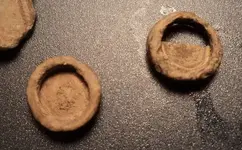
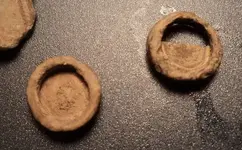

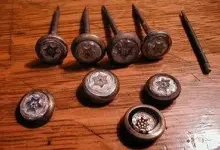
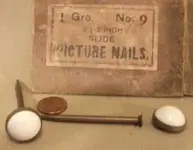
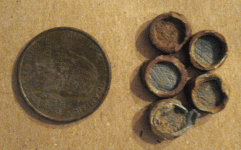
![6907703[1].webp](/data/attachments/590/590425-2cdc8a1cc154a0b9af7a3e021512ac07.jpg?hash=yJ7SICV5qn)
